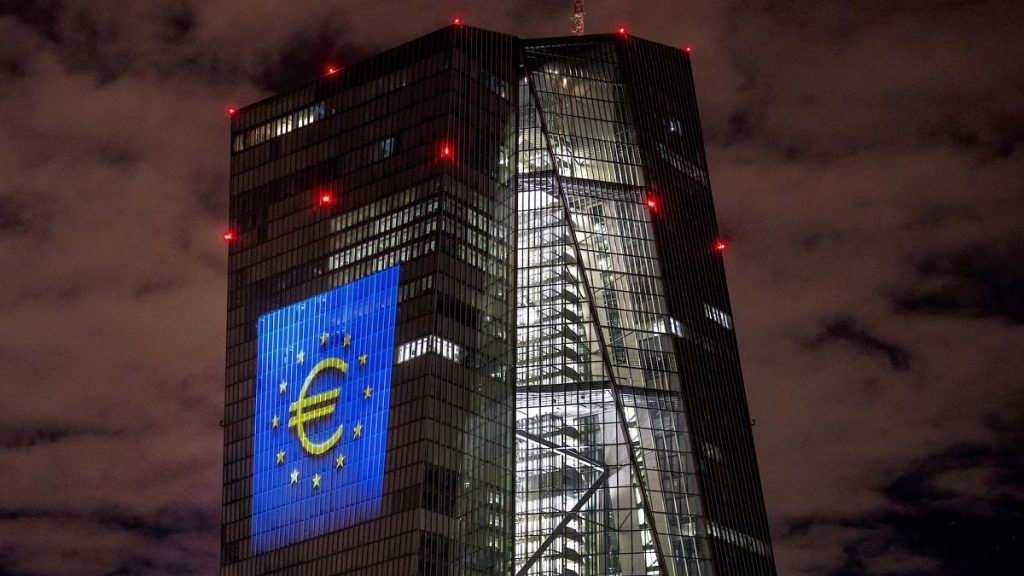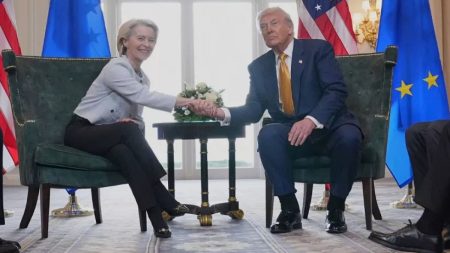The euro’s descent against the US dollar to a two-year low reflects a confluence of factors impacting the Eurozone, creating a perfect storm of economic and political uncertainty. The currency’s slide, accelerating since September 2024, highlights the divergent paths of the US and Eurozone economies, further exacerbated by the unexpected outcome of the US presidential election. Donald Trump’s victory and his proposed protectionist trade policies have injected significant volatility into global markets, with the euro bearing the brunt of the uncertainty. This vulnerability stems from the Eurozone’s dependence on exports, particularly in the automotive sector, which could be severely impacted by Trump’s threatened tariffs. The euro’s weakness against the surging US dollar underscores the diverging monetary policies of the Federal Reserve and the European Central Bank, further amplifying the currency’s decline.
The economic outlook for the Eurozone appears increasingly bleak, with several factors contributing to the prevailing pessimism. The cessation of Russian gas transit through Ukraine has exacerbated energy concerns, driving up natural gas prices and adding further strain to already struggling economies. This energy crisis, coupled with weakening manufacturing data from key economies like France and Germany, paints a concerning picture of economic contraction within the region. Political instability further compounds these issues, with collapsing ruling coalitions and the rise of far-right movements adding another layer of complexity to the Eurozone’s challenges. These internal struggles, combined with external pressures like a slowing Chinese economy and the uncertainty surrounding Trump’s trade policies, create a perfect storm for the Eurozone, contributing to the euro’s continued slide.
The divergence in monetary policy between the US Federal Reserve and the European Central Bank plays a crucial role in the euro’s decline. While the Fed initially embarked on an aggressive easing cycle, subsequent strong economic data prompted a more hawkish stance. This shift, reflected in the Fed’s revised projections for interest rate cuts, signals a less accommodative monetary policy than previously anticipated. Conversely, the ECB is expected to maintain its easing trajectory, potentially even accelerating its rate cuts in response to the Eurozone’s worsening economic outlook. This divergence in monetary policy further strengthens the dollar against the euro, widening the interest rate differential and making dollar-denominated assets more attractive to investors.
The political landscape within the Eurozone further complicates the economic picture. The rise of far-right movements and the fragility of ruling coalitions contribute to political instability, hindering the implementation of effective economic policies. This instability creates uncertainty for investors, making the euro less attractive and exacerbating its decline. The combination of political fragmentation, economic weakness, and external pressures creates a challenging environment for the Eurozone, with the euro’s decline reflecting these underlying issues.
Trump’s victory in the US presidential election introduces another layer of complexity to the global economic landscape. His protectionist rhetoric and proposed tariffs on imports from major trading partners, including potential tariffs targeting European automakers, have created significant uncertainty for the Eurozone. The automotive sector is a key component of the European economy, and the threat of tariffs adds to the existing economic woes, further pressuring the euro. The uncertainty surrounding Trump’s trade policies and their potential impact on global trade flows contributes to the overall volatility in currency markets, with the euro particularly vulnerable given the Eurozone’s dependence on exports.
Looking ahead, analysts predict a further decline in the euro, with some forecasting parity against the dollar. This would mark a significant depreciation and underscore the depth of the Eurozone’s economic and political challenges. The confluence of factors impacting the Eurozone, including the energy crisis, weak economic data, political instability, and the uncertainty surrounding Trump’s trade policies, all contribute to the euro’s vulnerability. The divergence in monetary policy between the Fed and the ECB further exacerbates the situation, strengthening the dollar and weakening the euro. The euro’s continued decline reflects the growing concerns about the Eurozone’s economic future and the numerous challenges it faces.














